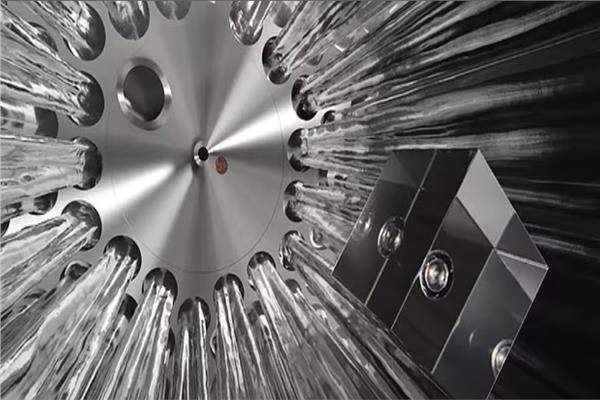Scientists have now come up with a new technique to achieve nuclear fusion. First Light Fusion, of the University of Oxford, used a technique called projectile fusion to accelerate fuel 200 times the speed of sound.
The fusion of missiles is considered simpler and more efficient to use energy And cheaper than traditional methods, according to the team.
“Our approach to fusion is all about simplicity,” said Dr. Nick Hooker, co-founder and CEO of First Light Fusion. We believe that missile fusion is the fastest route to commercially viable energy generation from fusion.
Conventional methods tend to be inertial fusion, where a small amount of fuel is injected with a laser and ignited to make it burn.
First Light Fusion set out to devise a new method for achieving nuclear fusion that is simpler, more energy efficient, and involves fewer physical risks.
Instead of using complex and expensive lasers or magnets, projectile fusion uses a high-speed projectile.
In the case of First Light, a large, high-speed two-stage gas cannon is used to fire a 100-gram projectile at a pellet containing fusion fuel, in the form of tritium and deuterium.
The projectile reaches staggering speeds of 14,540 mph (23,399 km/h) before hitting the target – about 20 times the speed of sound.
When the projectile hits the fuel, it accelerates to more than 156,586 miles per hour (252,000 kilometers per hour), or 200 times the speed of sound, creating a pulse of fusion energy.
According to First Light Fusion, this makes the fuel the fastest moving object on Earth at that point.
As for how this would apply to a large-scale nuclear power plant, the target containing the nuclear fusion fuel would be dropped into the reaction chamber before the projectile was launched down through the same entrance.
The projectile will then catch up with the target, impacting it at just the right moment, creating a pulse of fusion energy.
“This energy is absorbed by the lithium flow into the chamber, causing it to heat up,” First Light Fusion explained.
The flowing fluid protects the chamber from massive energy releases, avoiding some of the most difficult engineering problems in other fusion approaches. Finally, the heat exchanger transfers the heat of the lithium to the water, generating steam that drives the turbines and produces electricity.
Finally, First Light Fusion aims to develop nuclear power plants in which the process repeats every 30 seconds.
Although only a few millimeters in size, the company claims that each targeted pellet can generate enough energy to power the average home in the UK for more than two years.
Compared to inertial fusion techniques, which require expensive lasers and magnets, First Light’s equipment is relatively simple and inexpensive.
According to the company, it has spent less than £45m to achieve the merger.
After nuclear fusion has been achieved, the team is now planning a “gain” experiment, where more energy is put in than that present. But the company doesn’t think it will take long before it has a nuclear fusion plant up and running.
